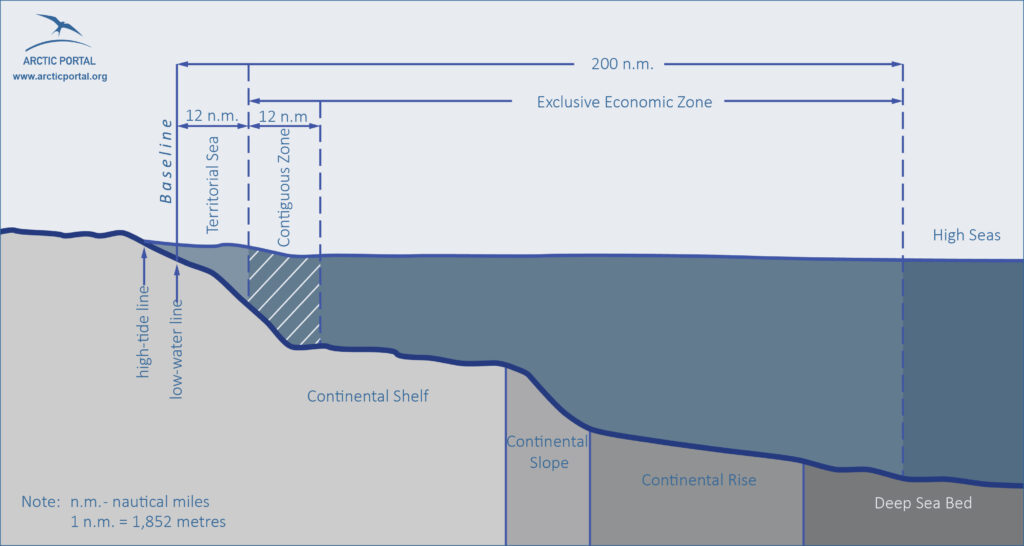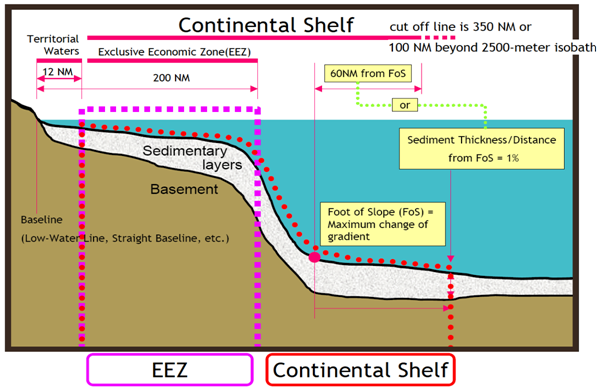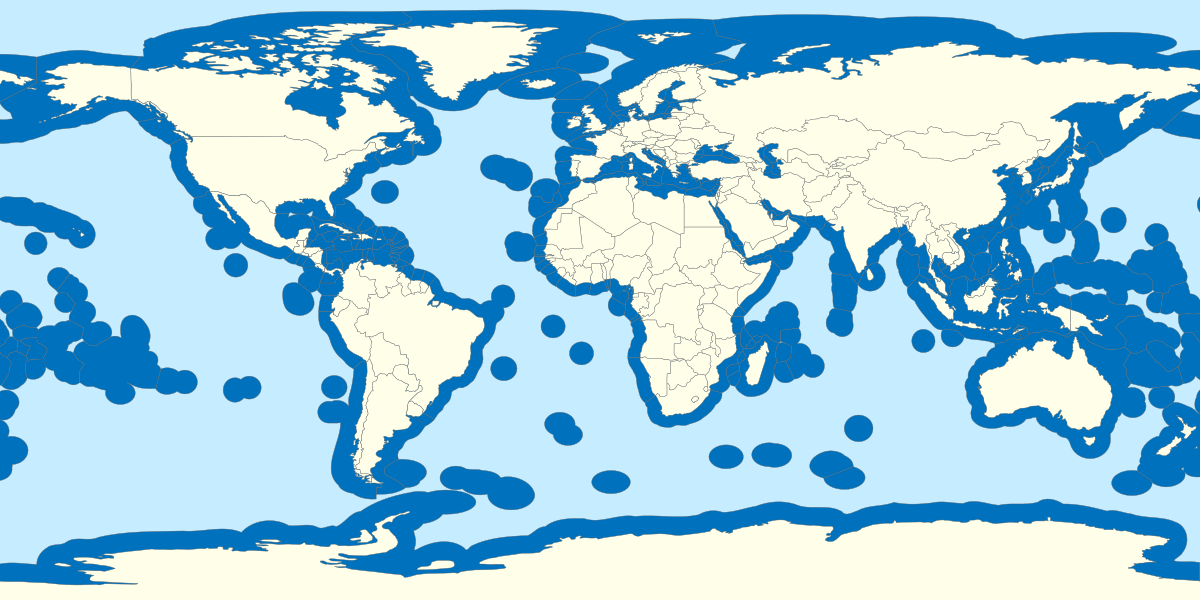Genesis of the Concept of the EEZ
The EEZ is an area beyond and adjacent to the territorial sea, not extending beyond 200 nautical miles from the baseline of the territorial sea. The origin of the concept of the EEZ may go back to the practice of the Latin American States after World War II. Originally the figure of 200 nautical miles appeared in 1947, when Chile (23 June 1947) and Peru (1 August 1947) claimed such an extent for the exercise of full sovereignty. The figure of 200 nautical miles relied on scientific facts: it would enable the Andean States to reach the Peruvian and the Humboldt Currents, which were particularly rich in living species.
Furthermore, the guano birds, whose deposit is an important fertiliser, feed on anchovy. Scientific research has shown that anchovy larvae had also been located in up to a 187-mile width. The Andean States thus inferred that a perfect unity and interdependence existed between the sea’s living resources and the coastal populations. The claim for a 200-
nautical-mile zone was considered as a means to correct an inequity inflicted upon them by geography, namely the lack of a continental shelf. Later, the distance of 200 miles was also claimed by Costa Rica (27 July 1948), El Salvador (7 September 1950) and Honduras (17 January 1951).
In 1952, Chile, Ecuador and Peru adopted the Declaration on the Maritime Zone, which later became known as the Declaration of Santiago. In this Declaration, three States proclaimed: ‘[A]s a principle of their international maritime policy that each of them possesses exclusive sovereignty and jurisdiction over the area of sea adjacent to the coast of its own country and extending not less than 200 nautical miles from the said coast.’ After UNCLOS I and II, coastal States expanded their claims to marine spaces. In fact, several Latin American States, such as Ecuador (1966), Argentina (1966), Panama (1967), Uruguay (1969) and Brazil (1970) extended their claims to 200 nautical miles.
Against that background, the Montevideo Declaration on the Law of the Sea was adopted on 8 May 1970. The Declaration recognised the right of coastal States to avail themselves of the natural resources of the sea adjacent to their coasts and of the soil and subsoil thereof in order to promote the maximum development of their economies and to raise the levels of living of their peoples. At the same time, the Declaration accepted the freedom of navigation and overflight. Furthermore, the Declaration of Latin American States on the Law of the Sea (the Lima Declaration) was adopted on 8 August 1970. The Declaration essentially followed the Montevideo Declaration, although no mention was made of the 200-nautical-mile limit.
As the Caracas session of UNCLOS III approached, it became apparent that the maritime powers would not accept such an extensive territorial sea which would deter economic and military interests. Thus, in 1971, Kenya proposed the concept of the EEZ in the Asian-African Legal Consultative Committee at Colombo in a spirit of compromise. Furthermore, in January 1972, Kenya presented a working paper on the concept of the EEZ at the annual meeting of the Asian-African Legal Consultative Committee held in Lagos, Nigeria. The Kenyan working paper encouraged other States to further consider the question, and, in June 1972, this subject was discussed again at the African States Regional Seminar on the Law of the Sea at Yaoundé, Cameroon. The Report of the Yaoundé Seminar, which was adopted unanimously, firmly supported the establishment of an ‘economic zone’. On 7 August 1972, with overwhelming support from the developing countries, Kenya formally submitted its proposal for a 200-mile EEZ to the UN Seabed Committee. According to this proposal, the natural resources of the zone would be placed under the jurisdiction of the coastal State, while freedom of navigation was to be guaranteed. Further to this, a variant of the concept of the EEZ, the notion of the ‘patrimonial sea’, was reflected in the Declaration of Santo Domingo, adopted by the Conference of Caribbean Countries on 9 June 1972.
On 2 August 1973, Colombia, Mexico and Venezuela submitted their proposal for the ‘patrimonial sea’ to the Seabed Committee. The two concepts effectively merged at UNCLOS III. By 1975, the basic concept of the EEZ seemed to be well established. Thus the legal regime governing the EEZ was embodied in Part V of the LOSC.
Unlike the continental shelf, the coastal State must claim the zone in order to establish an EEZ. The vast majority of coastal States have claimed a 200-mile EEZ. In this regard, the ICJ, in the Libya/Malta case of 1985, stated: ‘[T]he institution of the exclusive economic zone, with its rule on entitlement by reason of distance, is shown by the practice of States to have become a part of customary law.’
It is said that the 200-mile EEZ amounts to some 35–36 per cent of the oceans as a whole. Seven leading beneficiaries of the EEZ are: the United States, France, Indonesia, New Zealand, Australia, Russia and Japan. It is ironic that leading EEZ beneficiaries are essentially the developed States. While most States which had previously claimed an exclusive fishing zone (EFZ) have replaced such a zone by an EEZ, several States still maintain an EFZ. Considering that all States claiming an EFZ became parties to the LOSC, it may be argued that the relevant provisions of the EEZ respecting fisheries are applicable to the EFZ. In fact, the Arbitral Tribunal, in the 1986 Dispute Concerning Filleting within the Gulf of St. Laurence between Canada and France, took this view: ‘[T]he concepts of economic zone and fishing zone are regarded as equivalent with respect to the rights exercised therein by a coastal State over the living resources of the sea.’



